Club Curriculum Building a Better Goalkeeper eBook
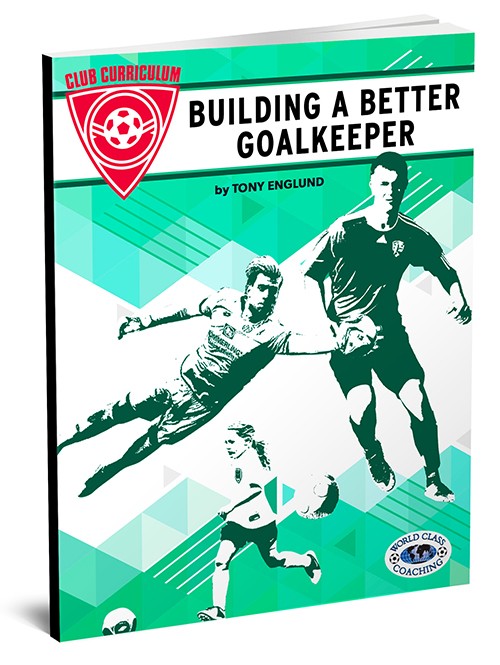
Or view in easy-to-read web pagesPART ONEPART TWOPART THREEPART FOUR
Continue reading
Or view in easy-to-read web pagesPART ONEPART TWOPART THREEPART FOUR
Continue readingWORLD CLASS COACHING Club Curriculum Building a Better Goalkeeper By Tony Englund TABLE OF CONTENTS Part One INTRODUCTION TRAINING SESSIONS Part Two TRAINING SESSIONS Part Three TRAINING SESSIONS Part Four TRAINING SESSIONS ABOUT THE AUTHOR INTRODUCTION “Who wants to play goalie today?” How many younger teams’ pre-game discussions begin with this question? The goalkeeper position
Continue readingWORLD CLASS COACHING Club Curriculum Building a Better Goalkeeper By Tony Englund TABLE OF CONTENTS Part Two TRAINING SESSIONS One –Hand Catching in Pairs - 6x4 yard space Players work in pairs with one ball. The goalkeepers stand four yards from one-another and play catch. Instruct players to throw and catch with one hand and
Continue readingWORLD CLASS COACHING Club Curriculum Building a Better Goalkeeper By Tony Englund TABLE OF CONTENTS Part Three TRAINING SESSIONS Training Session#6: Diving: Collapse, Extension and Blocking. Introduction: After young players are introduced to basic, safe, technical diving, it is useful to teach them that there are multiple types of diving saves, each designed to deal with
Continue readingWORLD CLASS COACHING Club Curriculum Building a Better Goalkeeper By Tony Englund TABLE OF CONTENTS Part Four TRAINING SESSIONS ABOUT THE AUTHOR Training Session#9: Reaction Saves Introduction: Goalkeepers tend to like to work on reaction saves in part because the training can be very lively and challenging and in part because these saves often end up
Continue reading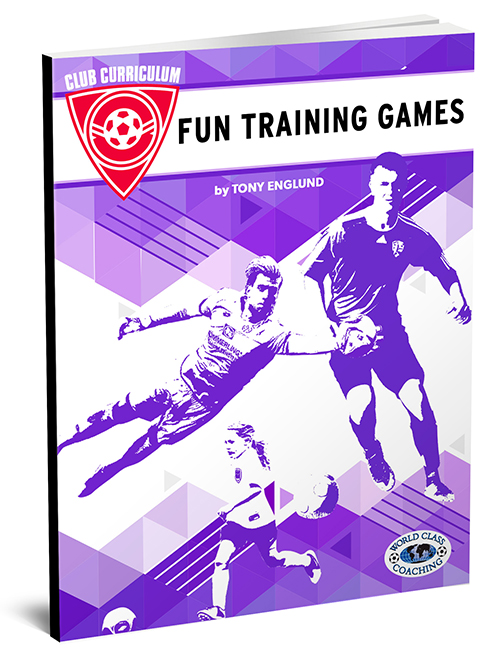
Or view in easy-to-read web pagesPART ONEPART TWOPART THREEPART FOUR
Continue reading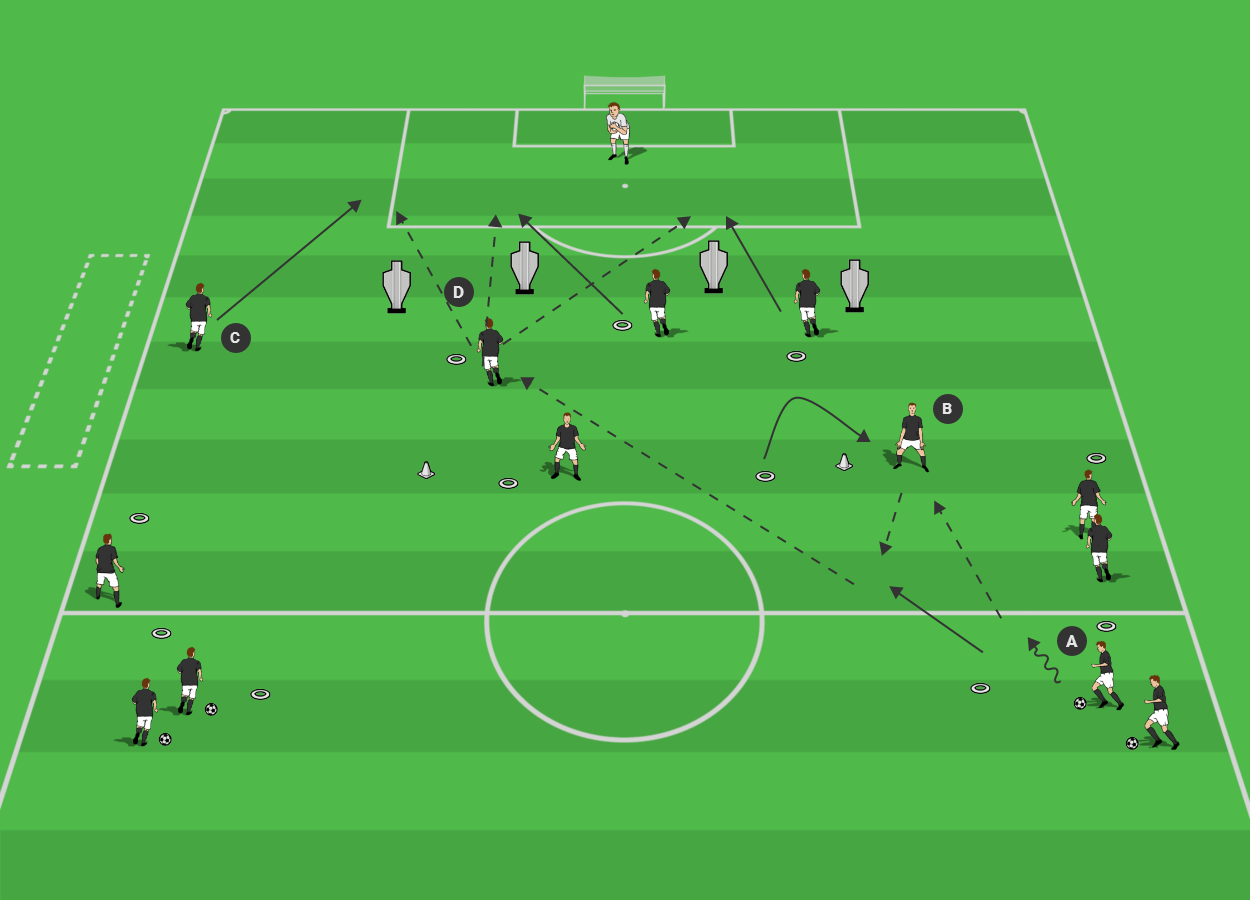
By George Kee Area Size: Half Field # of Players: 12-18 Time: 20 Minutes Objectives • To develop attacking combinations used during a switch of play • To develop timing of runs in behind the backline • To understand movements of winger and full back on weak side Description: Player A starts by dribbling through gate
Continue reading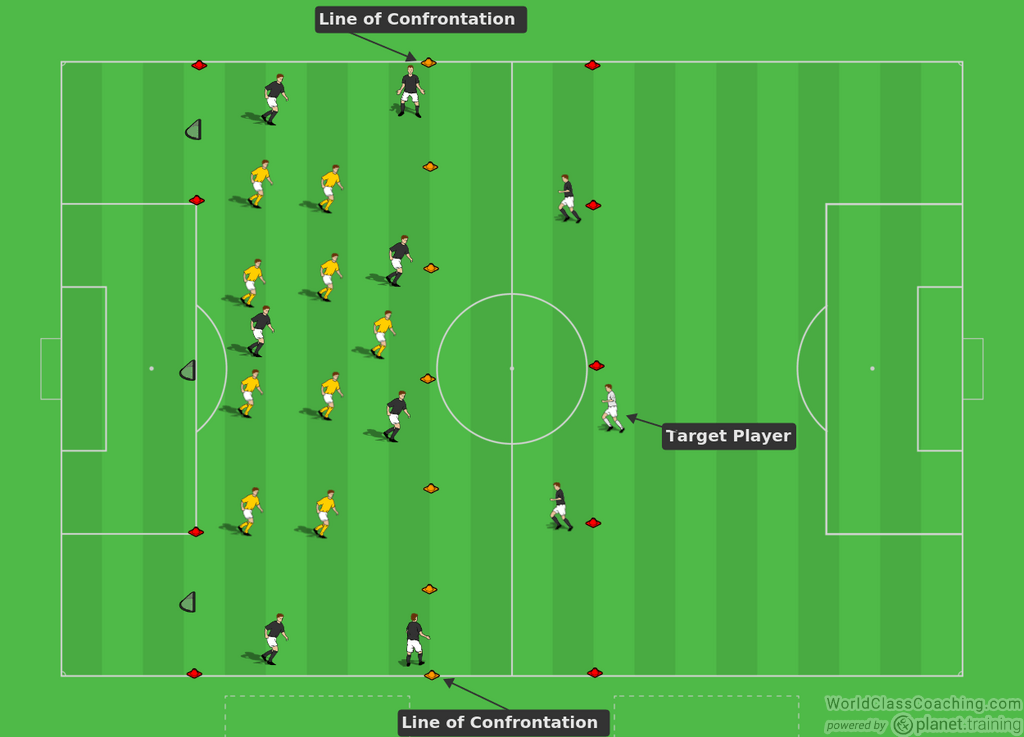
By Anthony Hazelwood Defend in a Deep Lying Block Defense – Aerobic Power. Defend in a Deep Lying Block Defense – Aerobic Power. The following activity coaches a team to defend in a deep lying block defense. The specific fitness target is transient endurance while adapting the player’s aerobic power in an extended small-sided format.
Continue reading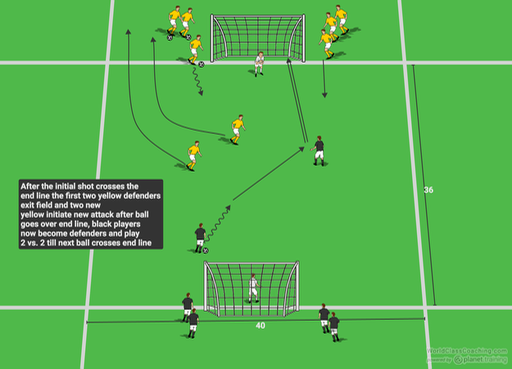
By Steven Smith Two versus Two Transition to Goal Setup: Two full size goals are set up 36 yards apart facing each other and players are placed evenly at each post with balls at the right posts of both goals ready to enter into play. Goalkeepers occupy each of the goals. This activity is extremely demanding
Continue readingWORLD CLASS COACHING Club Curriculum Fun Training Games By Tony Englund TABLE OF CONTENTS Part One INTRODUCTION DRIBBLING GAMES Part Two DRIBBLING GAMES Part Three PASSING & BALL STRIKING GAMES Part Four PASSING & BALL STRIKING GAMES ABOUT THE AUTHOR Introduction: Coaching young children The starting point for any adult planning to mentor young children is
Continue readingWORLD CLASS COACHING Club Curriculum Fun Training Games By Tony Englund TABLE OF CONTENTS Part Two DRIBBLING GAMES Grid tag with ball - 2 15x15 yard grids Each player has a ball. Divide the team into two groups, putting one group into each grid. At a signal from the coach, one player on each team leaves her
Continue readingWORLD CLASS COACHING Club Curriculum Fun Training Games By Tony Englund TABLE OF CONTENTS Part Three PASSING & BALL STRIKING GAMES Part II: Games teaching passing and striking the ball Coaching Points Passing • Plant the non-striking foot so that the toes point in the direction of the pass. • Lock the ankle and all points below
Continue readingWORLD CLASS COACHING Club Curriculum Fun Training Games By Tony Englund TABLE OF CONTENTS Part Four PASSING & BALL STRIKING GAMES ABOUT THE AUTHOR Pineapple Drop - 10x15 yard areas Divide the group into teams of 3-4. One player puts her ball atop the group’s cone and then steps behind to monitor and retrieve errant shots.
Continue reading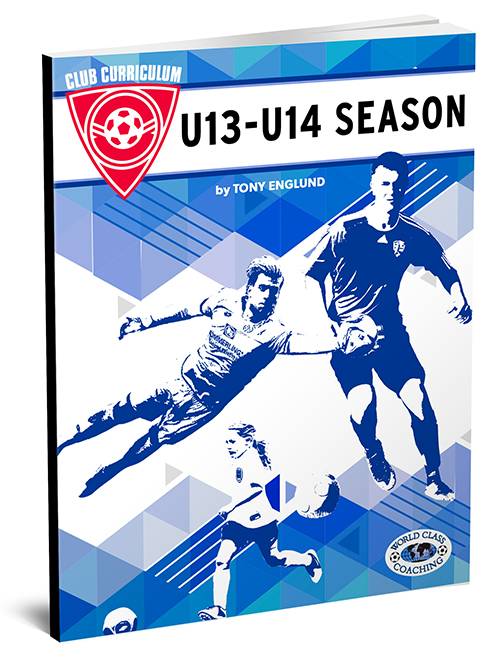
Or view in easy-to-read web pagesPART ONEPART TWOPART THREEPART FOUR
Continue readingWORLD CLASS COACHING Club Curriculum U13/14 Season By Tony Englund TABLE OF CONTENTS Part One INTRODUCTION SYSTEMS OF PLAY PASSING AND POSSESSION SESSIONS Part Two DEFENDING SESSIONS Part Three TECHNICAL SESSIONS Part Four ATTACKING SESSIONS ABOUT THE AUTHOR Introduction: U13/U14 – Competitive Soccer The starting point for any adult planning to mentor children is to be
Continue readingWORLD CLASS COACHING Club Curriculum U13/14 Season By Tony Englund TABLE OF CONTENTS Part Two DEFENDING SESSIONS Training Session #9: Defending Footwork Introduction: Much of good defending is in the approach and ability to control the attacker’s speed, options and movement. This session utilizes environments borrowed from national and high-level club team training to train defenders
Continue readingWORLD CLASS COACHING Club Curriculum U13/14 Season By Tony Englund TABLE OF CONTENTS Part Three TECHNICAL SESSIONS Training Session #14: Playing in the air Introduction: As the size of the field and the abilities of the players to drive balls over distance increase, the capability and willingness of players to deal with a ball played at
Continue readingWORLD CLASS COACHING Club Curriculum U13/14 Season By Tony Englund TABLE OF CONTENTS Part Four ATTACKING SESSIONS ABOUT THE AUTHOR Training Session #18: Cross and finish 1. Introduction: With the bigger field and increasing complexity of opposing defenses, many goal-scoring opportunities will come through stretching the opposing back line and serving the ball for on-running
Continue reading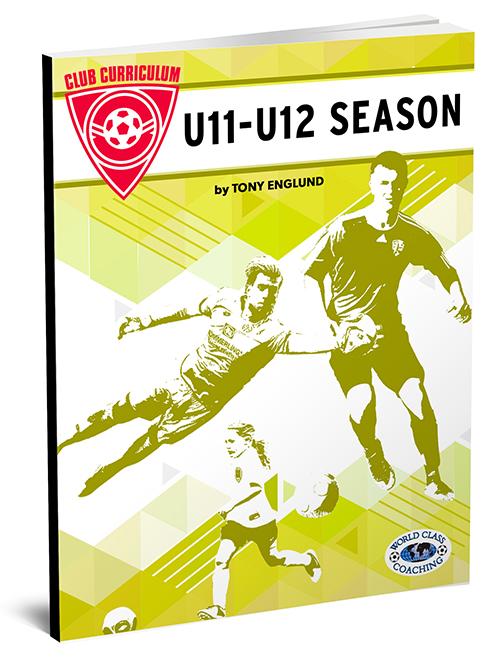
Or view in easy-to-read web pagesPART ONEPART TWOPART THREEPART FOUR
Continue readingWORLD CLASS COACHING Club Curriculum U11/12 Season By Tony Englund TABLE OF CONTENTS Part One INTRODUCTION SYSTEMS OF PLAY INDIVIDUAL TRAINING SESSIONS Part Two PASSING AND POSSESSION SESSIONS Part Three TECHNICAL SESSIONS Part Four ATTACKING SESSIONS ABOUT THE AUTHOR Introduction: The Golden Age of Soccer Learning The starting point for any adult planning to mentor young
Continue readingWORLD CLASS COACHING Club Curriculum U11/12 Season By Tony Englund TABLE OF CONTENTS Part Two PASSING AND POSSESSION SESSIONS Training Session #6: Passing and Receiving. Introduction This session reviews technical passing in high-repetition environments and then adds a tactical element to encourage players to make good choices as they pass. Cue ball - 25x12 yard area
Continue readingWORLD CLASS COACHING Club Curriculum U11/12 Season By Tony Englund TABLE OF CONTENTS Part Three TECHNICAL SESSIONS Training Session #14: Long Passing. Introduction The U11/U12 years are critical to the development of sound ball striking and the ability to play over distance through long passing. This session features a progression from basic passing through technical long
Continue readingWORLD CLASS COACHING Club Curriculum U11/12 Season By Tony Englund TABLE OF CONTENTS Part Four ATTACKING SESSIONS ABOUT THE AUTHOR Training Session#18: Finishing Introduction This collection of finishing exercises does not represent a free standing session. These training environments are proven to be effective and fun means of improving finishing. Pressure shooting - 1/3 field Two
Continue reading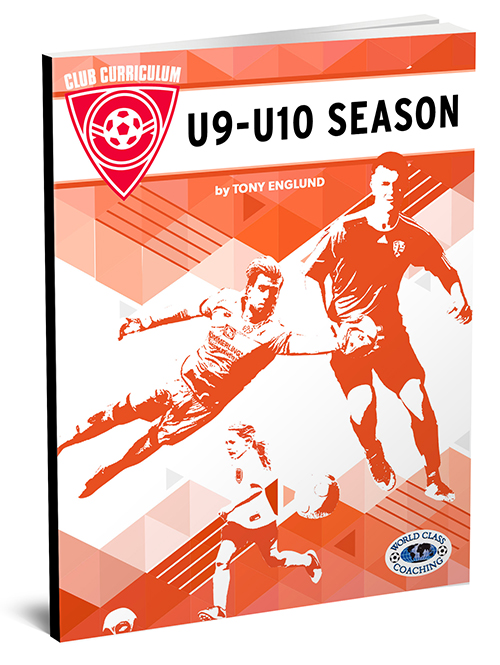
Or view in easy-to-read web pagesPART ONEPART TWOPART THREEPART FOUR
Continue reading